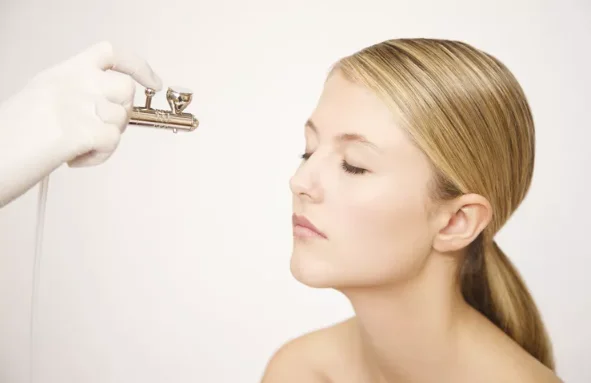In recent years, the demand for tanning options that provide a sun-kissed glow without the risk of UV exposure has skyrocketed. As a result, two popular methods have emerged at tanning salon Fleming Island: UV-free tanning and sunless tanning. While these terms are often used interchangeably, they actually refer to different tanning processes. Understanding the differences between these two methods can help you choose the best option for achieving a safe and beautiful tan.
Understanding UV-Free Tanning
UV-free tanning refers to any tanning method that does not involve exposure to ultraviolet (UV) radiation. UV radiation, which comes from the sun or artificial sources like tanning beds, can increase the risk of skin cancer, accelerate aging, and cause other skin damage. UV-free tanning options eliminate this risk by using alternative methods to darken the skin.
Types of UV-Free Tanning
- Spray Tanning: One of the most popular forms of UV-free tanning, spray tanning involves applying a mist containing DHA (dihydroxyacetone), a colorless sugar that reacts with the amino acids on the skin’s surface to create a temporary darkening effect. Spray tanning can be done professionally in a salon or at home with self-tanning sprays.
- Airbrush Tanning: Similar to spray tanning, airbrush tanning is a technique where a technician uses an airbrush to apply a tanning solution to the skin. This method allows for more precision and customization, making it ideal for contouring and achieving a natural-looking tan.
- Tanning Lotions, Mousses, and Gels: These products are another popular UV-free tanning method. They contain DHA and are applied directly to the skin. These options allow for more control over the application process, and users can gradually build their tan to their desired level.
- Bronzers: While not a tanning method in the traditional sense, bronzers provide an immediate but temporary tan by applying a pigmented formula to the skin. Bronzers wash off with soap and water and are often used to enhance a tan or add a bit of color for a special occasion.
Understanding Sunless Tanning
Sunless tanning is a term that often overlaps with UV-free tanning but specifically refers to self-tanning products and techniques that darken the skin without sun exposure. In essence, sunless tanning is a subset of UV-free tanning. All sunless tanning methods are UV-free, but not all UV-free tanning methods are considered sunless. The primary ingredient in sunless tanning products is DHA, which reacts with the skin to produce a tan-like appearance.
Popular Sunless Tanning Methods
- Self-Tanning Lotions and Creams: These are among the most common sunless tanning products. Available in various shades to suit different skin tones, these lotions and creams provide a gradual tan that develops over a few hours.
- Self-Tanning Towelettes: Convenient for on-the-go tanning, these pre-soaked wipes contain a tanning solution that can be easily applied to the skin for a streak-free tan.
- Self-Tanning Drops: A newer addition to the sunless tanning market, self-tanning drops can be mixed with your regular moisturizer or serum to create a customized tan. They offer flexibility and control over the intensity of the tan.
- Foams and Mousses: These products provide a lightweight, easy-to-apply option for sunless tanning. They typically dry quickly and allow for streak-free application, making them a popular choice for at-home tanners.
Key Differences Between UV-Free Tanning and Sunless Tanning
While both UV-free and sunless tanning options provide a safer alternative to traditional tanning methods that involve UV exposure, there are some key differences between them:
- Method and Application:
○ UV-Free Tanning: Includes various methods such as airbrush tanning, spray tanning, and the use of tanning lotions, gels, and bronzers.
○ Sunless Tanning: Specifically refers to self-tanning products such as lotions, creams, towelettes, and mousses that use DHA to achieve a tan.
- Longevity:
○ UV-Free Tanning: The duration of the tan depends on the method used. For example, airbrush and spray tans can last anywhere from 5 to 10 days, depending on skin care and skin type.
○ Sunless Tanning: The longevity of sunless tans also depends on the product and application but typically lasts from 3 to 7 days.
- Customization:
○ UV-Free Tanning: Professional UV-free tanning options like airbrush tanning offer more customization in terms of color, contouring, and intensity, as they are applied by trained technicians.
○ Sunless Tanning: Offers a wide range of products for varying skin tones and desired tan depths, but customization is largely dependent on the user’s ability to apply the product evenly.
- Skill Level Required:
○ UV-Free Tanning: Professional UV-free tanning services, like airbrush tanning, require little skill on the part of the client, as they are applied by professionals.
○ Sunless Tanning: At-home sunless tanning requires a certain level of skill to apply products evenly and avoid streaks, especially in hard-to-reach areas.
- Cost:
○ UV-Free Tanning: Professional UV-free tanning services, such as airbrush or spray tanning, can be more expensive due to the cost of service and products used.
○ Sunless Tanning: Sunless tanning products for at-home use are typically more affordable, making them a budget-friendly option for those who want to maintain a tan without regular salon visits to tanning salon near my location.
Safety Considerations
Both UV-free and sunless tanning methods are generally considered safe alternatives to UV tanning. However, there are some precautions to keep in mind:
- Patch Test: Always conduct a patch test before using any tanning product, especially if you have sensitive skin or are prone to allergies.
- Preparation and Aftercare: Proper skin preparation (exfoliating and moisturizing) before application and maintenance (moisturizing and avoiding exfoliants) after tanning are crucial for achieving an even, long-lasting tan.
- Ventilation: When using spray tans or self-tanning sprays, ensure you are in a well-ventilated area to avoid inhaling the product.
- DHA Safety: While DHA is generally considered safe for topical use, avoid inhalation or contact with eyes and mucous membranes.
- Sun Protection: UV-free and sunless tanning do not protect against UV radiation. Always use sunscreen with broad-spectrum SPF to protect your skin when outdoors.
Conclusion
Choosing between UV-free tanning and sunless tanning depends on your personal preferences, budget, and skill level. Both methods offer safe alternatives to traditional UV tanning, allowing you to achieve a beautiful tan without the associated risks of sun exposure. By understanding the differences between these two tanning options, you can select the method that best suits your needs and lifestyle, ensuring a gorgeous, sun-kissed glow year-round.

Robert Wiley is a versatile and accomplished writer with expertise spanning multiple niches, delivering insightful and engaging content across various fields. His diverse experience and deep knowledge make him a sought-after author in the world of digital writing.




